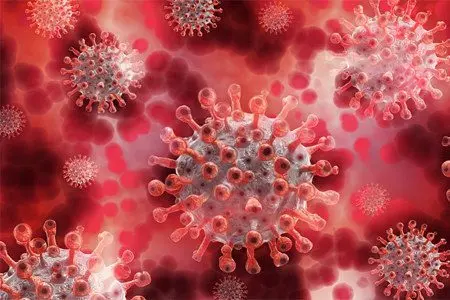Contents

What is a cytokine storm and what are its features?

A cytokine storm is a systemic inflammatory reaction that occurs in an extremely severe form. The second name of the cytokine storm is hypercytokinemia, since the condition is accompanied by excessive activation of immunocompetent cells and uncontrolled production of inflammatory cytokines.
Cytokines are peptide molecules, the appearance of which indicates that the body is in danger. They act as a stimulant of immune responses to eliminate infectious pathogens. Lymphocytes are the main producers of cytokines. When the mechanism of active production of these peptides starts, all signs of inflammation appear.
Some diseases provoke extreme activity of cytokines. Their unrestrained synthesis leads to disruption of biochemical and physiological processes in the body. A stormy defensive campaign is unfolding against their own cells. Immune bodies direct “killer” activity not to pathogens, but to internal organs. As a result of such chaos, healthy tissues are damaged, the functions of all systems are disrupted, and severe complications develop. Patients with a cytokine storm have an increased risk of death from respiratory and heart failure, pulmonary edema, liver or kidney dysfunction. In some cases, multiple organ failure is observed, that is, damage to several vital organs.
The respiratory system takes the first hit. The attack of cytokines in this case is characterized as acute respiratory distress syndrome (ARDS). Uncontrolled entry of cytokines into the circulating bloodstream causes a change in the composition of the blood. Normally, in a healthy person, oxygenated blood is delivered to the cells of the lungs (alveoli). With an intense inflammatory process, the alveolar vesicles are filled with exudate with pathological cells. The essentially alien liquid suppresses the physiological function of the alveolar tissue. Clinically, this is manifested by respiratory failure, which often results in death.
Symptoms of acute respiratory distress syndrome:
An increase in temperature to critical levels (above 38-39 ° C).
Headache.
Shortness of breath, labored breathing.
Pain in the lumbar region.
The main data for the diagnosis are laboratory blood tests. In serum, a high level of cytokines is determined – TNF-α, IL-6, IFN-γ.
The composition of complex therapy includes:
monoclonal antibodies.
Interleukin blockers.
Immunoglobulin.
The concept of “cytokine storm” was first used by the American oncologist James Ferrara in 1993. He dealt with issues of oncohematology and studied the mechanism of bone marrow transplant rejection. In the future, the state of increased synthesis of cytokines began to be called hypercytokinemia, cytokine storm.
An increase in the level of cytokines in the blood occurs with severe pathologies. She speaks of an unfavorable prognosis for the patient. Cytokine storm develops quite rarely. With coronavirus infection, mortality from cytokine storm phenomena is about 70%. The reasons for its development are currently being studied.
Causes of Cytokine Storm

The root cause that triggers the pathological mechanism of the development of a cytokine storm has not yet been identified. Studies on this issue show that the release of cytokines is preceded by the activation of Toll-like receptors (TLR) of mononuclear cells. Some scientists suggest that the hypercytokemia reaction is based on a genetic predisposition – a high expression of immune cell receptors.
Consider a number of pathologies in which a cytokine storm is defined as a potentially fatal condition:
Viral infections. According to statistics, a cytokine storm accompanies the complicated course of bird flu (H5N1 strain), swine flu (H1N1 strain). Coronavirus infection COVID-19 is often accompanied by pneumonia, severe respiratory dysfunction. Against the background of these severe complications, hypercytokinemia becomes the most common cause of death in patients.
Sepsis, septic shock. Bacterial and fungal infections in favorable conditions often turn into a generalized form. Streptococci, staphylococci, fungi of the genus Candida provoke lymphocytes to excessive release of cytokines into the blood.
Oncological diseases. Leukemias, lymphomas and other malignant diseases of the hematopoietic system in the terminal stage are accompanied by the phenomena of a cytokine storm.
Organ transplant. The cytokine storm is the main factor in the rejection of a transplanted organ. An immune response is triggered, which is called graft-versus-host. Most often, hypercytokinemia is observed during transplantation of hematopoietic stem cells of the bone marrow.
In Vitro Fertilization. After implantation of embryos into the uterus, the activity of T-lymphocytes and NK cells, which synthesize cytokines, can be recorded. This process causes miscarriages, premature births.
Other reasons. The likelihood of a cytokine storm remains in acute pancreatitis with symptoms of pancreatic necrosis, hepatic encephalopathy, as well as in severe forms of bronchial asthma, not susceptible to glucocorticoids and bronchodilators.
Early signs of a cytokine storm

The main symptoms of a cytokine storm are:
Increasing the frequency of respiratory movements more than 30-40 per minute.
Inspiratory dyspnea, accompanied by difficulty in breathing and a feeling of lack of air.
Breathing becomes noisy.
The auxiliary muscles of the chest are involved in the act of breathing.
The patient takes a forced position – he sits resting his hands on the bed.
The skin takes on a bluish tint.
Periods of excitement alternate with lethargy, loss of consciousness.
Over time, dyspeptic disorders join – nausea, vomiting, diarrhea. The patient shows increased anxiety, excitability, rushes about in bed. There is an increase in heart rate of more than 90 beats per minute, a drop in blood pressure. If a respiratory viral infection is present, a persistent cough without sputum production appears. His attacks are debilitating, the patient suffers from respiratory failure.
Cytokine storm is observed in adult patients. In children, this condition is characterized as a multisystem inflammatory syndrome. A specific sign is a pronounced edema of the subcutaneous fat of the neck, due to which it increases. Soft tissue edema is caused by an increase in the permeability of the vessel walls. Small patients complain of aching, dull pain in the lower back. On examination, a rash on the skin, a decrease in urine output is determined. Some children have hallucinations, confusion, convulsive seizures similar to epileptic ones.
How to identify it? The most difficult task is to diagnose the distress syndrome in time and correctly. Treatment in the early stages prevents the development of severe, fatal consequences. An x-ray may not show specific changes in the lung tissue at the very beginning of the disease.
[Video] Lecture on “Acute Respiratory Distress Syndrome”
Treatment of cytokine storm
The patient is necessarily hospitalized in the intensive care unit and intensive care. If saturation is low, the patient is connected to a ventilator.
In order to minimize the risk of complications and death, the following is prescribed:
Targeted therapy – to suppress multiple organ lesions provoked by cytokines. Efficiency was shown by monoclonal antibodies to IL-6 – Tocilizumab, Sarilumab, inhibitors of Janus kinases (JAK kinases) – Baricitinib,
Tofacitinib. If improvement is not observed, IL-6 and IL-1 antagonists are prescribed – olokizumab, RPH-104. For example, one of these drugs is Artlegia (recommended by WHO for a cytokine storm caused by coronavirus), costing 50000 rubles.
Glucocorticosteroids – to suppress immune aggression – Dexamethasone, Methylprednisolone. These hormonal drugs have anti-inflammatory, anti-shock, immunosuppressive and anti-allergic properties.
Immunoglobulin – administered intravenously to suppress the activity of cytokines.
Antiviral therapy. Neuraminidase inhibitors are shown – Oseltamivir, drugs used in the treatment of HIV, viral hepatitis – recombinant interferon, Lopinavir, Ritonavir.
Antibiotics. The appointment of drugs that suppress the immune system can lead to the addition of a secondary bacterial infection. Use a combination of 2-3 antibiotics of different groups – Amoxicillin, Gentamicin, Levofloxacin.
Correction of DIC. To reduce the risk of thrombosis, anticoagulants are prescribed – Heparin, Rivaroxaban. With a tendency to bleeding, Etamzilat, aminocaproic acid is used. In severe cases, plasma transfusion is indicated.
Management of hypotension and shock. To stabilize the pressure, vasopressors are used – Norepinephrine, Dopamine, cardiotonic drugs – Dobutamine.
Complications and prognosis

With coronavirus, approximately 70% of deaths are associated with the development of respiratory distress syndrome. The main cause of death in patients is multiple organ failure, which developed against the background of a cytokine storm.
Cytokine storm is the cause of severe complications that aggravate the condition of patients:
Renal failure.
Encephalopathy.
liver failure.
DIC syndrome.
Multiple thrombosis.
Acute respiratory failure.
If the initial signs of a cytokine storm appear during a coronavirus infection, they should by no means be ignored. The patient needs urgent hospitalization in a specialized hospital to provide qualified medical care. The recovery and further life of the patient without serious complications depends on the timeliness of the start of the correct treatment.









